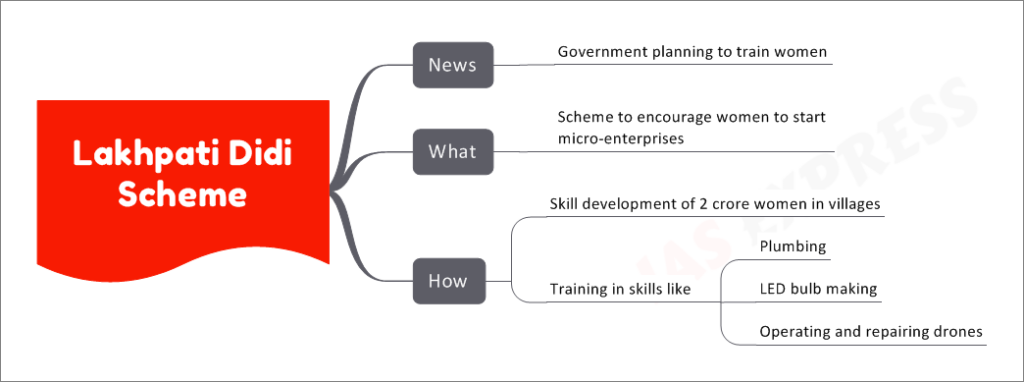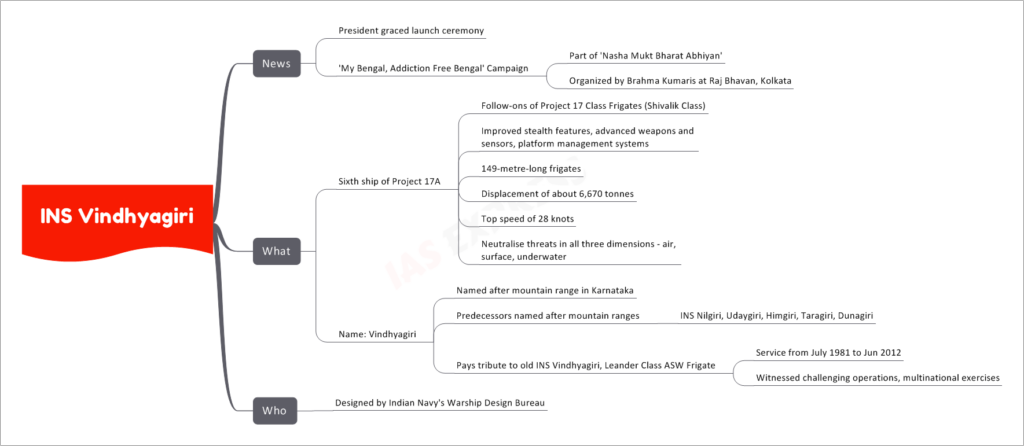[Newsbits] 17.08.2023

Matti Banana
The recent news of Matti Banana receiving a Geographical Indication (GI) tag has highlighted the exceptional qualities of this banana variety, often referred to as the 'Baby Banana'. The distinct features, cultural significance, and geographical exclusivity of Matti Banana make it a remarkable addition to the world of unique agricultural products.
A Closer Look at Matti Banana
A Sweet Delight: Baby Banana
- Matti Banana, fondly known as the 'Baby Banana', stands out for its unique characteristics and flavors.
Unveiling its Distinct Attributes
- Matti Bananas are slightly larger than human fingers, characterized by their wind-blown appearance, sweet fragrance, and honey-like taste.
A Rainbow of Varieties
- This banana variety offers a spectrum of flavors, comprising six types: Nal Matti, Theyn Matti, Kal Matti, Nei Matti, and Sundari Matti.
Culinary Recommendation
- Notably, the Matti Banana's low total soluble solids content (TSSC) makes it an ideal choice for baby food, endorsing its nutritional value.
A Geographical Journey: Native and Unparalleled
Indigenous Roots in Tamil Nadu
- Matti Banana finds its roots in the Kanniyakumari district of Tamil Nadu, where it has thrived for generations.
Cultivation Challenges in Other Regions
- Efforts to cultivate Matti Banana in other regions have been met with challenges, reinforcing its unique connection with its native soil.
The Fusion of Semmati: A Testament to Growth
The Semmati Fusion
- The fusion of Matti and Red banana varieties results in Semmati, a blend that offers unique nutritional benefits, especially for child growth.
A Historical Perspective
The Legacy of Matti Banana
- Historically, Matti Banana holds a significant place, with 165 varieties of banana recorded in Travancore in 1965. Yet, Matti remains unparalleled.
Nature's Influence on Cultivation
- The unique climate and soil of Kanniyakumari district are pivotal factors in the successful cultivation of Matti Banana.
The King's Wisdom
- The King of Travancore once noted that the essence of the region's climate and soil, crucial for Matti Banana cultivation, is invaluable and cannot be commodified.
Radio Thermoelectric Generators
Recent news highlights a groundbreaking collaboration between ISRO and BARC in the development of Radioisotope Thermoelectric Generators (RTGs), a pivotal leap in the realm of space propulsion. These nuclear-powered engines hold the promise of revolutionizing deep space missions, overcoming limitations posed by chemical engines and solar power.
Unraveling the Potential of RTGs
Beyond the Ordinary: Nuclear-Powered Engines
- RTGs represent a radical departure from conventional propulsion systems, harnessing the power of nuclear energy to drive spacecraft.
Overcoming Limitations for Deep Space Missions
- The rationale behind RTGs stems from the constraints posed by chemical engines, which are not ideally suited for deep space exploration.
- The distance of deep space makes solar power generation unviable due to diminishing sunlight intensity.
The Advantages of RTGs
Independence from Solar Proximity and Planetary Alignment
- One of the standout benefits of RTGs is their independence from solar proximity and planetary alignment.
- They eliminate the constraints of 'launch windows' associated with reliance on solar energy.
Unveiling the Mechanics of RTGs
Harnessing Radioactive Materials
- RTGs function through the utilization of radioactive materials, such as Plutonium-238 and Strontium-90.
Components of an RTG System
- An RTG system comprises a radioisotope heater unit (RHU) and the RTG itself.
- The heat generated by the radioactive decay is transferred to a thermocouple.
Generating Voltage for Propulsion
- The thermocouple transforms the heat into voltage, which is then used to charge batteries.
- The charged batteries subsequently serve as the motive force for the satellite.
Powering Spacecraft with RTGs: A Reality
Remarkable Achievements with RTGs
- RTGs have already powered an array of US spacecrafts, including Voyager, Cassini, and Curiosity.
Lakhpati Didi Scheme
In recent news, the government has unveiled plans for the Lakhpati Didi Scheme, a visionary initiative aimed at empowering women to step into the realm of micro-enterprises. This scheme is a beacon of hope, fostering skill development and entrepreneurship among women in rural areas.
Unveiling the Lakhpati Didi Scheme
Pioneering Women's Micro-Enterprises
- The Lakhpati Didi Scheme serves as a dynamic platform, designed to motivate and support women in establishing and operating micro-enterprises.
Empowering Women Through Skill Development
- The scheme envisions a transformative journey for 2 crore women in rural villages, empowering them through skill development initiatives.
- These skill development programs encompass a diverse array of abilities, such as plumbing, LED bulb making, and operating and repairing drones.
Skill Development: A Path to Prosperity
Plumbing Skills for Women
- Empowering women with plumbing skills opens doors to a traditionally male-dominated field, enabling them to contribute effectively to their communities.
LED Bulb Making: A Bright Opportunity
- By equipping women with the knowledge of LED bulb making, they can actively engage in sustainable practices while also potentially generating income.
Navigating the Skies: Drone Operation and Repair
- The scheme's emphasis on training in operating and repairing drones showcases the forward-looking nature of the initiative, tapping into emerging technological fields.
Kuwi Language
Recent news highlights the launch of "Kuwi Primer" and "Desia Primer," a significant step towards preserving and promoting the cultural heritage of Odisha. These primers aim to introduce children to the Kuwi Language and its Indo-Aryan counterpart, Desia, fostering a deep connection with their linguistic roots.
Unveiling the Kuwi Language
Essence of Kuwi Language
- The Kuwi Language is a South-Central Dravidian language that is intricately woven into the cultural fabric of Odisha.
- It is written using the Odia script, a writing system deeply rooted in the region.
Community and Speakers
- The Kandhas, a community residing in Odisha, are the speakers of the Kuwi Language.
- Their embrace of the language demonstrates its significance in preserving their cultural identity.
The Cultural Landscape of Kuwi
Geographical Scope
- The Kuwi Language finds its vibrant home in the state of Odisha, resonating across the region.
A Glimpse into Desia
The Desia Language
- Notably, the "Desia Primer" offers insights into the Desia language, which is also recognized as Koraputi Odia.
- Desia is an Indo-Aryan language, presenting a fascinating linguistic diversity within Odisha.
INS Vindhyagiri
Amidst noteworthy events in the maritime sector, President's presence graced the launch ceremony of INS Vindhyagiri, the sixth ship of Project 17A, highlighting India's commitment to enhancing naval capabilities. This ceremony was a part of the 'My Bengal, Addiction-Free Bengal' campaign, organized by the Brahma Kumaris as a significant stride in the 'Nasha Mukt Bharat Abhiyan'.
INS Vindhyagiri: A Remarkable Vessel
Advancements in Project 17A
- INS Vindhyagiri is the sixth ship of Project 17A, a successor to the Project 17 Class Frigates (Shivalik Class).
- These frigates are designed with improved stealth features, advanced weapons, sensors, and platform management systems.
- With a length of 149 meters and a displacement of approximately 6,670 tonnes, these frigates are equipped to neutralize threats across air, surface, and underwater domains.
- They boast a remarkable top speed of 28 knots.
Honoring the Name: Vindhyagiri
- The ship is aptly named after the Vindhyagiri mountain range in Karnataka, aligning with the tradition of naming predecessors after mountain ranges such as INS Nilgiri, Udaygiri, Himgiri, Taragiri, and Dunagiri.
- The name also pays tribute to the old INS Vindhyagiri, a Leander Class Anti-Submarine Warfare (ASW) Frigate that served from July 1981 to June 2012.
- During its service, it witnessed challenging operations and participated in multinational exercises, highlighting India's naval prowess.
Visionary Design
The Role of Indian Navy's Warship Design Bureau
- INS Vindhyagiri was designed by the Indian Navy's Warship Design Bureau, showcasing India's self-reliance and expertise in naval ship design.
If you like this post, please share your feedback in the comments section below so that we will upload more posts like this.





